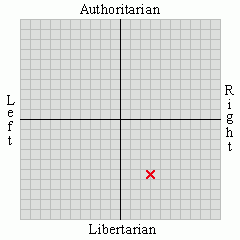Anyway, one of the things I do to try and get an edge up on my competition in fantasy football is to assess the strength of each team's schedule. It's not too hard to find canned statistical analysis out there that compiles the win-loss records of each team and its opponents. But it is hard to find such canned analysis that factors in home-field advantage (typically averaged at 8%, but there's an interest note that home-field matters more when teams are closely matched).
It's also very hard to find canned analysis that shows you the degree of such an advantage -- it's one thing to say "Arizona has the easiest schedule" or "Green Bay has the twelfth-easiest schedule" by ranking the schedules on a scale that runs on integers from 1-32. It's much more interesting to see not only that Arizona's schedule is the easiest, but by how much.
Well, after a fair amount of wrestling with Excel tonight, I got to it. As a courtesy to my fellow fantasy football players, I publish my assessment of how each team's schedule helps or hinders its overall chances of success. Obviously, any statistical assessment based on last year's performance of each team does not take into account personnel, coaching, health, and aging changes that have taken place in the interim. Even with what I think is a superior method of assessing strength of schedule, you need to remember that such an assessment has finite utility. As the season progresses, you will rely on something like this less and less.
Anyway, here goes, from worst to best schedules:
| HOU | 42.41% | ||
| TEN | 42.82% | ||
| DAL | 43.56% | ||
| CIN | 43.96% | ||
| NE | 44.12% | ||
| WAS | 44.13% | ||
| JAX | 44.29% | ||
| PHI | 44.54% | ||
| NYG | 45.03% | ||
| IND | 45.35% | ||
| CLE | 45.75% | ||
| DET | 45.87% | ||
| BAL | 46.89% | ||
| ATL | 46.93% | ||
| CHI | 46.98% | ||
| NYJ | 47.06% | ||
| MIN | 47.14% | ||
| OAK | 47.25% | ||
| BUF | 47.53% | ||
| PIT | 47.97% | ||
| GB | 48.03% | ||
| MIA | 48.13% | ||
| KC | 48.35% | ||
| DEN | 48.67% | ||
| CAR | 48.81% | ||
| TB | 49.48% | ||
| NO | 50.48% | ||
| SF | 51.26% | ||
| SEA | 51.31% | ||
| SD | 51.36% | ||
| STL | 51.65% | ||
| AZ | 52.40% |
You note that the average schedule factor here is less than 50%. You might think at first glance that since every game has a winner and a loser, this is necessarily a zero-sum game. But that's why the homefield advantage is important -- if you play all your easy opponents at home, and all your tough opponents away, that's an unfavorable schedule. The results are also skewed a bit because last year's NFL records were unusually polarized; there were a few teams with great records and a few teams with really bad records.
This is dramaticaly illustrated with, for instance, Chicago -- Chicago is not a bad team by any stretch of the imagination, and was not a bad team last year. However, it has to play Minnesota twice and Green Bay twice. That's bad luck for da Bears because both Minnesota and Green Bay performed at playoff levels last year. That makes Chicago's a tough schedule and thus produces an unfavorable schedule rating.
So, there is no theoretical reason why schedule assessments should be a zero-sum system, and in fact it is not. If it seems like Houston just can't catch a break this year, here is at least part of the answer as to why -- the vagaries of the scheduling system have stacked the deck against the Texans.
Now, good teams will rise above this sort of stuff where bad teams will fall victim to it. Which is to say, again, that it's important to not place too much weight on this -- a 52.40% schedule advantage does not doom Arizona to a 9-7 season. It means that all other things being equal -- and they are not -- Arizona's schedule looks like it will give it maybe one more win than a theoretical "average" schedule, particularly in a close game and particularly at home, making it more likely that Arizona will be a contender for the playoffs late in the season.







No comments:
Post a Comment